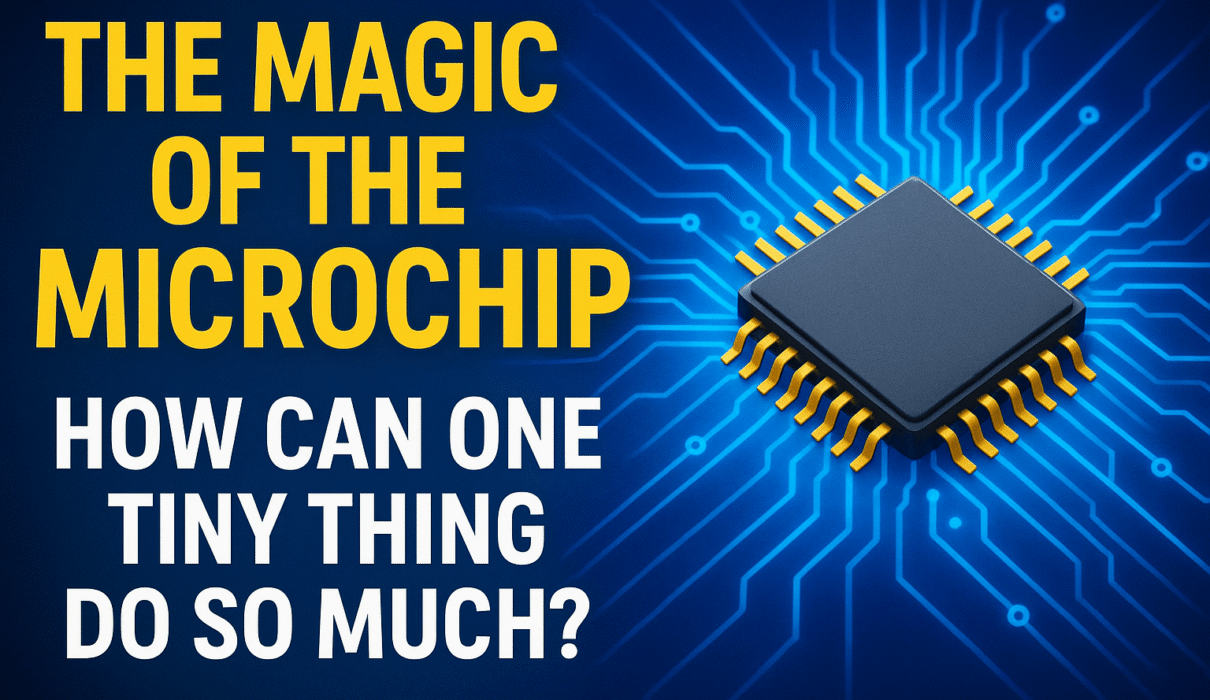Hold your phone. Now, glance around you: your computer, your vehicle, your TV remote, even your smart toaster – they all share one thing. Hidden inside each of those devices is an engineering wonder so tiny it’s hardly there, yet so mighty it has changed our world: the microchip.
But how can one tiny speck of silicon, often no bigger than your fingernail, perform such an astonishing array of tasks, from letting you stream movies to navigating rush hour traffic? The secret lies in its intricate design, a miniature universe built to process information at mind-boggling speeds.
Welcome to the Transistor City!
To understand the magic of the microchip, let’s use an analogy. Imagine a bustling, futuristic city, but instead of buildings and roads, this city is made up of billions – sometimes even trillions – of tiny electronic switches called transistors.
The Transistor: The City’s Light Switch: Every transistor is a small light switch that can be ON or OFF. ON is a ‘1’ and OFF is a ‘0’ in the computer world. This ‘1’ and ‘0’ is the basic language of all digital data – everything you see, hear, and do on a device is reduced to these binary digits eventually.
Logic Gates: The Intersections and Junctions: Well, these individual light switches are not necessarily scattered around. They are placed in extremely small groups called “logic gates.” Consider logic gates as the intersections and junctions of our city. They receive inputs (signals from other switches) and, according to certain rules, generate an output. For instance, an “AND” gate would only switch its output switch ON when all its input switches are ON.
Circuits: The City Blocks and Districts: When you connect millions and billions of these logic gates in certain combinations, you form “circuits.” These circuits are similar to the various districts or city blocks of our transistor city. Some circuits may be specialized for performing calculations (the “arithmetic district”), others to hold temporary information (the “short-term memory district”), and others to control the flow of information (the “traffic control center”).
From Blinking Lights to Stunning Power
So, how does this “Transistor City” handle information?
When you press an icon on your phone, send a message, or even just nudge your mouse, electrical signals (like small puffs of electricity) course through this tiny city. These signals flip particular sequences of transistors ON and OFF, thousands of times per second.
The combined activity of these billions of miniature switches, flipping ON and OFF in synchronized, coordinated patterns, enables the chip to:
Compute: Your phone processor can add, subtract, multiply, and divide numbers billions of times a second. This is essential for everything from graphics rendering to executing demanding applications.
Store and Retrieve Data: Chips have memory areas in which data (your pictures, programs, operating system) are stored temporarily or permanently in those ON/OFF states.
Manage and Control: A chip serves as the brain, controlling all the rest of the parts of a device – instructing the screen to show what, the speaker to produce what sound, and the Wi-Fi how to hook up.
The Miniaturization Miracle
What is so magical about microchips isn’t merely that they can do these things, but how small they have gotten. Due to amazing breakthroughs in manufacturing, engineers are able to pack literally billions of transistors into a chip smaller than your thumbnail.
Picture it: building a city with billions of light switches, all in perfect alignment, on the surface area of a postage stamp! This miniaturization makes possible incredible computing power in devices we can hold in our hands, in addition to making them power efficient.
The Unseen Enabler
The microchip is the behind-the-scenes star of nearly every bit of technology we use today. It’s the quiet, marvelously intricate brain that animates our virtual world. Next time you scroll a webpage with ease, text someone, or even ask a smart speaker a question, pause for a moment to marvel at the “magic” of that small, mighty silicon chip quietly whirring away in the background. A tribute to human creativity, it converts trillions of tiny switches into a machine of infinite possibilities.


